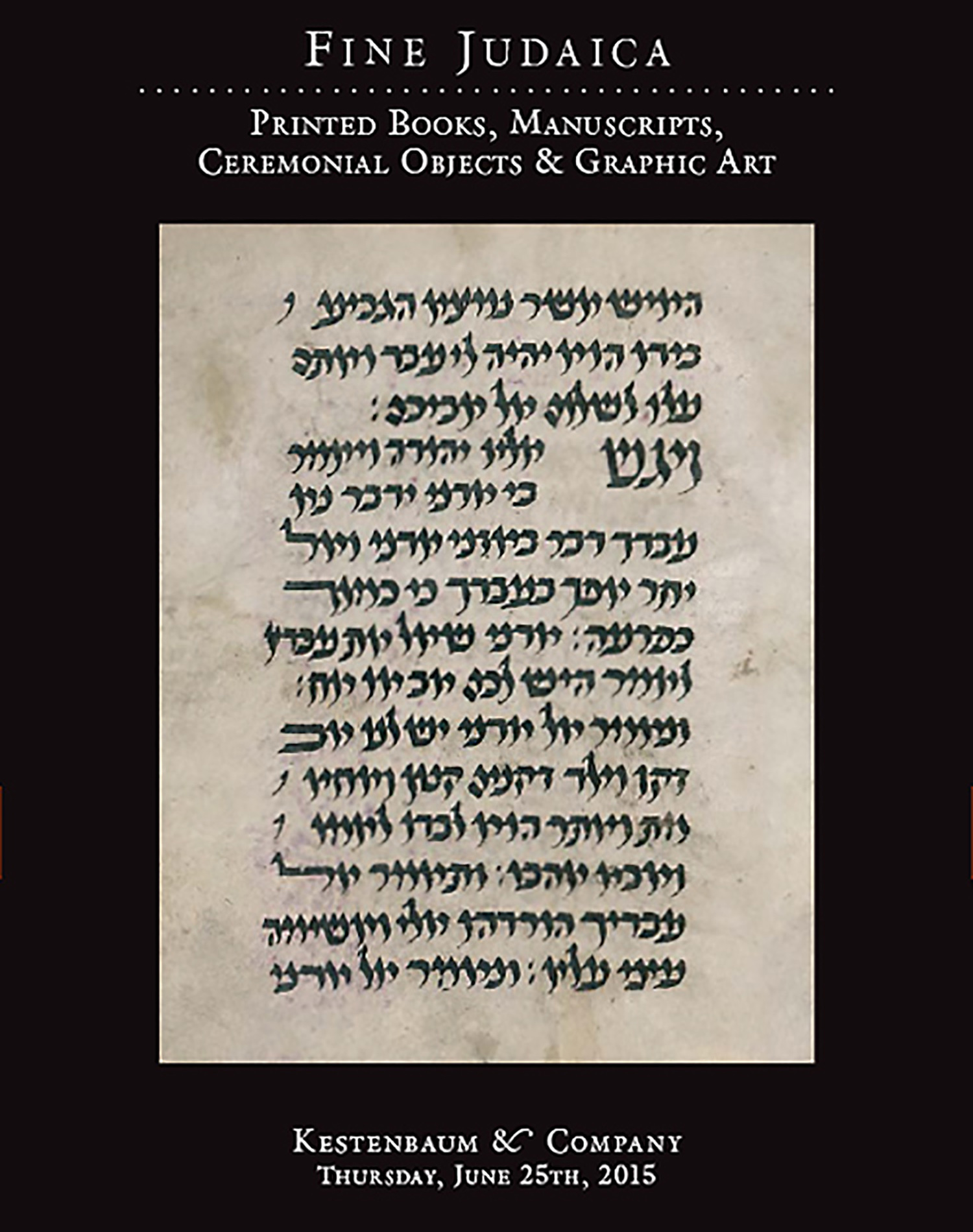Attributed to). Reumah [laws of ritual slaughter]. With commentaries Tzaphnath Paneach and Chezkath Yad by <<Isaac Onkeneira>> , designed to align the present rulings with those of Maimonides’s Code.

AUCTION 65 |
Thursday, June 25th,
2015 at 1:00
Fine Judaica: Printed Books, Manuscripts, Ceremonial Objects and Graphic Art
Lot 102
(NACHSHON GAON.
Attributed to). Reumah [laws of ritual slaughter]. With commentaries Tzaphnath Paneach and Chezkath Yad by <<Isaac Onkeneira>> , designed to align the present rulings with those of Maimonides’s Code.
Constantinople: n.p. 1565
Est: $2,000 - $3,000
PRICE REALIZED $2,200
<<Exceptionally Rare Work by Isaac Onkeneira, Colleague of Don Joseph Nasi.>>
Nachshon bar Tzadok, celebrated for his calendrical research and author of numerous responsa was the Gaon of Sura from 871-879, succeeding Amram Gaon (see EJ, Vol. XII, col. 793). According to the title of the present work, the manuscript of Nachshon Gaon was found in the famed library of Don Joseph Nasi, the Duke of Naxos (1524-79). Both Yaari and Yudlov express the creeping suspicion that Isaac Onkeneira composed not only the commentaries, but actually the text itself.
The title “Reumah” is laden with double entendres: The Biblical Reumah was the concubine of Nachor, brother of Abraham. Reumah bore Tevach (Gen. 22:24). In Hebrew, the proper name Tevach has the double meaning of “slaughter,” an allusion to the focus of the work. Literally, the name “Re’u-mah” signifies “See what”. The work concludes with a panegyric to Don Joseph Nasi by the poet Joseph ben Samuel Halevi ibn Hakim. Each line of the poem concludes with the word “ro’i” (vision). The poem, as well as the title of the book, may very well allude to the fact that Don Joseph’s palace bore the name “Belvedere,” whose origin is Italian. In the 16th-century, “belvedere” - really two words, “bel” (beautiful) “vedere” (to see) - was the term for a structure such as a cupola or turret atop a house designed to command a view. Thus, R’eu-mah (“see what”) was one more way of heaping honor upon the benefactor Don Joseph Nasi. Indeed Isaac Onkeneira was director of the yeshiva and synagogue that Don Joseph Nasi maintained at his palace at Belvedere located just outside Constantinople.
See JE, Vol. IX, p. 405; EJ, Vol. XII, cols. 837-839; S.H. Kook, Midrash Mei HaShiloach, Kiryath Sepher II (1925) pp. 267-9; C. Roth, The House of Nasi: The Duke of Naxos (1948) pp. 175-6, 180-2, 246 n. 22.
